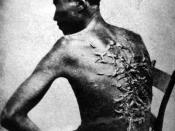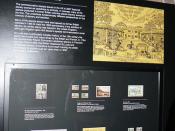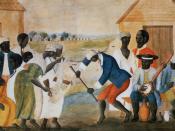The Underground Railroad, an elaborate escape network for slaves, was responsible for the abolition of slavery in the United States. Today, in most countries, our freedoms are protected by law and often taken for granted. We quickly forget that throughout human history, many have lived enslaved, with little or no personal freedoms. In Canada and the United States, slavery was a reality just a few generations ago. The first slaves arrived in British North America from Africa in 1619 and were traded for food. By 1708 twelve thousand African slaves were in Virginia. In 1776, the beginning of the American Revolution, the population of the state of Virginia was equally divided between whites and their black slaves.
Slavery was an inhumane system of forced labour. Thousands of field hands were needed to clear forests in order to build plantations in the southern United States. Thousands more were needed to plant, harvest and process crops such as rice, indigo, tobacco, sugar and cotton.
Plantation owners employed slave drivers who, at times, worked the fields and set the pace for the field hands while, at other times, they urged the slaves on with words or whip. One South Carolina rice planter quoted in Kenneth M. Stampp's The Peculiar Institution, outlined the duties of a slave driver: Drivers are, under the Overseer, to maintain discipline and order on the place.
They are to be responsible for the quiet of the Negro-houses, for the proper performance of tasks, for the bringing out the people early in the morning and for the immediate inspection for such things as the Overseer only generally superintends.
Female slaves performed work such as cooking, caring for children and nursing the sick. Old or disabled slaves were soap makers, candle makers, brewers and bakers. Older men gardened,


